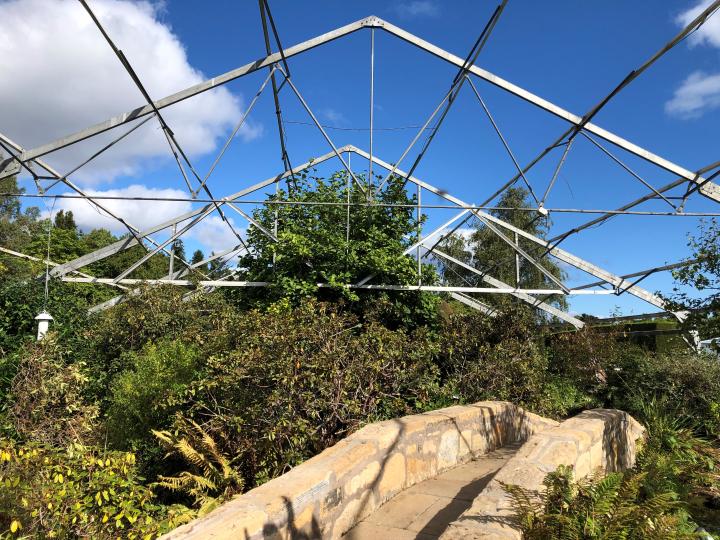
Reaching Net Zero: Reducing our Carbon Emissions by 98%
We’re thrilled to be able to share a significant milestone as a Garden - through a fundamental shift in our strategy and operations, we’ve achieved Net Zero carbon emissions. We now use just 2% of the energy than before implementing changes, and hope this sets a new benchmark for climate-action in botanic gardens.
Like many other botanic gardens, we previously required a surprisingly large amount of energy to operate. This was partly for business reasons - heating, administration and travel - but mostly for the industry-specific conservation. Glasshouses, for example, have very low insulation but are required to be heated to 16oC, even through winter periods when outside temperatures in Fife are regularly below freezing. In most botanic gardens, conservation-specific energy usage comes from a combination of electricity, heating systems fired by natural gas, and fuel for tractors and garden management.
A Strategic Shift
In 2016, we began a process of reducing its carbon footprint, initially enabled by Climate Change Fund, which supported climate control systems in parts of our glasshouse range. These changes enabled us to distribute heat more effectively through our glasshouses, which brought reductions in energy use of nearly 30%. However, our team and Trust felt that further steps could be taken.
In 2020, we took a radical step in changing the way we conserve plants: instead of curating the widest possible diversity of plants from around the world, our mission shifted to research and conservation of temperate plants that are relevant to Fife, and other areas with similar climates. This decision enabled a cascade of bold steps to follow, including turning off the glasshouse heating system, reducing mowing operations, and changing energy sources.
Changes in Management Operations
Glasshouses require large amounts of energy to operate – creating warm environments means that, for example, watering and weeding need to increase as well, and glass has amongst the lowest insulation properties of any building material. When also considering large internal volumes and draughty fixtures and fittings, heating glasshouses is a daunting process. Warm glasshouse temperature also attract increased insect pests, such as cockroaches, requiring intensive pest management.
Whilst other organisations have tried to address this by installing geothermal or solar heating, our strategic shift means that many of the hidden climate costs of botanic gardens can be removed altogether, whilst still carrying out a wide range of education and research activities.
We have been able to take bold steps, including decommissioning our glasshouse range and converting its site into a long-term, living experiment into the effects of climate change on urban habitats. Our largest glasshouse is being converted into a Climbing Garden, with the glass removed but the frame retained as a scaffold for climbing plants. This is partly a statement of intent, but also a unique educational opportunity to display the range of plant forms and functions.
Culture Change
It is easy to disagree about whether the responsibilities for taking action on climate change lies with people or organisations. Our team here at St Andrews Botanic Garden takes the view that organisations are made up of people, and that everyone can make a difference at work and at home. Our relatively lean team structure means that we can take bold decisions and implement them quickly. As such, we’re working with other organisations so that our bold steps can inspire larger institutions to make changes to enable similar carbon savings.
“ The biodiversity crisis is the most pressing existential threat to society, and botanic gardens are uniquely placed to make a difference. Some of these changes are really tough but their solutions require thinking differently about what we do, often from first principles. We have found that profound changes are possible as long as you anticipate and embrace the trade-offs that are required. ” – Dr Harry Watkins, Director

